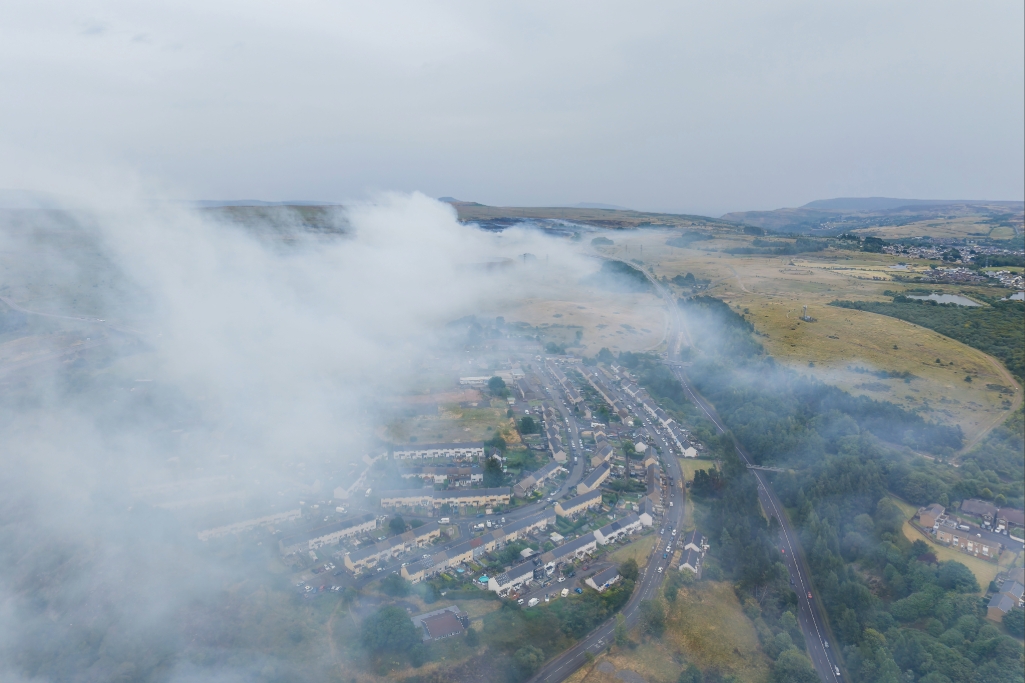Wildfire: The new catastrophe exposure


By Ray Legg, Wholesale and International Property Leader, Intact Insurance.
Wildfire has forced its way onto the global insurance agenda. A peril that once appeared in the margins of property underwriting files has now become central to conversations between insurers, brokers, and clients in a multitude of territories.
The shift has been rapid. California and Australia dominate the headlines, but in recent years, we have seen serious events in Canada, Greece, Chile, Spain, Portugal, and even parts of Northern Europe.
Global losses are considerable. We all recall the January 2025 wildfires in Los Angeles which destroyed over 16,000 structures—among the highest structural losses ever seen in a U.S. wildfire—according to the California Department of Forestry and Fire Protection. The predicted cost is $30 billion.
In contrast, wildfires on the moorlands of Yorkshire and the Arthur's Seat fire just outside Edinburgh last summer illustrated the new risks much closer to home. It is no longer safe to think of wildfire as a regional property hazard. It has become a systemic risk, reshaped by climate change and urban sprawl.
Sitting in London, our Wholesale and International Property team has had a front-row seat to this change. We provide direct and facultative reinsurance for large and complex accounts, and the number of wildfire submissions landing on our desks has risen sharply. This isn’t just a function of more events—it reflects a growing realisation across the industry that wildfire deserves the same strategic attention as flood, windstorm, or earthquake.
The challenge with wildfire is its unpredictability. A combination of drought, high winds, and changing land use can turn a minor blaze into a catastrophe within hours. Identifying exposure is the first step. It’s not, however, enough to look only at historical loss data. Patterns are evolving too rapidly for historic data alone. We need to draw on climate models, land-use studies, and real-time environmental data to understand how the risk is evolving. At Intact Insurance, we have invested in analytical tools that bring these elements together, helping brokers and clients move from hindsight to foresight.
Wildfire can typically damage property by direct flame, resultant smoke damage, airborne embers, radiant heat or simply by blocking access to property. Therefore, it is important for clients to check their Fire Hazard Zones and strengthen buildings using fire-resistant materials such as Class A-rated roofing and fire-resistant glass. They should also create buffer zones through effective vegetation management, remove combustible hazards such as wood pallets or propane tanks, install sprinkler protection, and carry out regular maintenance.
What differentiates us in this space is the combination of underwriting expertise and enduring relationships. We have supported high-hazard property clients for decades, and the continuity we provide is valued as much as the capacity itself. At the same time, we’re not standing still. By applying AI to support our capacity allocation, we can respond more efficiently and ensure brokers see clarity and consistency in how we deploy capital. The technology strengthens the partnership; it doesn’t replace it.
The broader market context also matters. We are still operating in a soft environment where competition for premium is intense, but that should not lull anyone into complacency. Catastrophe exposures are becoming more correlated, and the industry will inevitably respond. We expect to see a gradual move toward tied facilities and delegated authorities as carriers look for more control and efficiency. For brokers, the key will be working with markets ready for this change rather than reacting after it has happened.
That brings me to why brokers choose us. Our focus has always been on partnership: providing capacity where it’s needed, standing by clients through volatile cycles, and offering technical support that helps brokers deliver solutions. With Intact Insurance, we’re able to provide local knowledge to a global marketplace.
For insurance professionals, the lesson is clear. Wildfires are no longer seasonal anomalies but systemic climate-driven risks, demanding not only immediate claims response but also long-term adaptation in underwriting, capital allocation, and risk modelling.
Wildfire risk is not going away. Far from it, wildfire is shaping up to be one of the defining catastrophe challenges of this generation. Brokers who anticipate this and work with markets committed to resilience will be the ones best placed to support their clients. At Intact Insurance, that is exactly the path we are determined to follow.